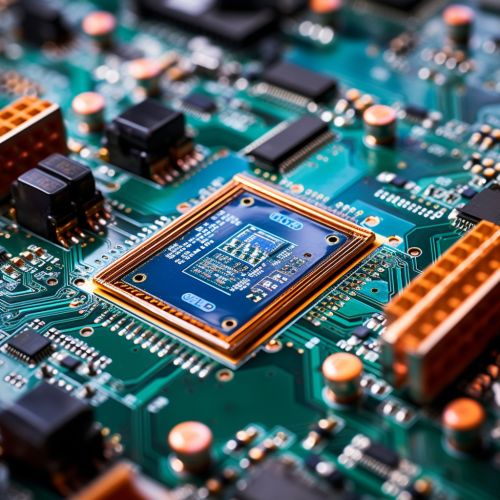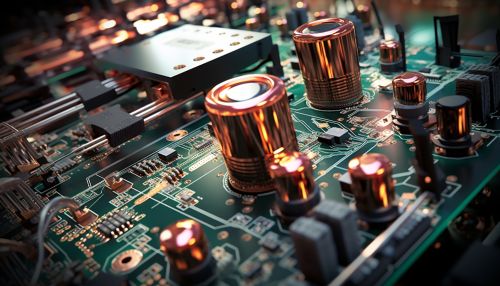Circuit Theory
Introduction
Circuit theory is a foundational concept in electrical engineering and physics, dealing with the study of electric circuits, their components, and the electrical phenomena associated with them. It is a branch of electrical engineering that provides an understanding of how circuits function, allowing for the design and analysis of electrical and electronic circuits.
Basic Concepts
Circuit theory is based on several fundamental principles and concepts. One of the most basic is Ohm's law, which states that the current through a conductor between two points is directly proportional to the voltage across the two points, and inversely proportional to the resistance between them. This law is a cornerstone of circuit theory, enabling the calculation of current, voltage, or resistance in a circuit if the other two quantities are known.


Another fundamental concept is Kirchhoff's circuit laws, which are two equalities dealing with the current and potential difference (commonly known as voltage) in the lumped element model of electrical circuits. Kirchhoff's current law (KCL) states that the sum of currents entering a node (or a junction) in a circuit equals the sum of currents leaving the same node. Kirchhoff's voltage law (KVL) states that the sum of the electromotive forces (emfs) in any closed loop or mesh in a network is equal to the sum of the potential drops in that loop.
Circuit Elements
Circuit theory involves several types of circuit elements, including resistors, capacitors, inductors, and sources of electromotive force such as batteries and generators. Each of these elements has a specific function in a circuit and is represented by a unique symbol in a circuit diagram.
Resistors
Resistors are components that resist the flow of electric current. They are used in circuits to control the amount of current, to divide voltage, and to produce heat. The resistance of a resistor is measured in ohms (Ω).
Capacitors
Capacitors are components that store electrical energy in an electric field. They are used in circuits to block direct current while allowing alternating current to pass, to filter out noise, and to store and release energy. The capacitance of a capacitor is measured in farads (F).
Inductors
Inductors are components that store electrical energy in a magnetic field. They are used in circuits to block rapid changes in current, to filter out high-frequency noise, and to store and release energy. The inductance of an inductor is measured in henries (H).
Sources
Sources of electromotive force, such as batteries and generators, provide the energy that drives current through a circuit. They are represented in circuit diagrams by specific symbols that indicate their function and direction of current flow.
Circuit Analysis
Circuit analysis is the process of determining the currents and voltages in a circuit. There are several methods for analyzing circuits, including node analysis, mesh analysis, and Thevenin's theorem.
Node Analysis
Node analysis, or nodal analysis, is a method that focuses on the nodes, or junction points, in a circuit. It involves applying Kirchhoff's current law to each node in the circuit and solving the resulting system of equations to find the node voltages.
Mesh Analysis
Mesh analysis, or loop analysis, is a method that focuses on the loops, or closed paths, in a circuit. It involves applying Kirchhoff's voltage law to each loop in the circuit and solving the resulting system of equations to find the loop currents.
Thevenin's Theorem
Thevenin's theorem is a method that simplifies a complex circuit to a single voltage source and a series resistor. It is a powerful tool for analyzing circuits with multiple sources and many components.
Circuit Design
Circuit design is the process of creating a plan for a new electrical circuit. It involves choosing the types and values of the circuit elements, arranging them in a functional layout, and creating a circuit diagram. The goal of circuit design is to create a circuit that performs a desired function with maximum efficiency and reliability.
Applications of Circuit Theory
Circuit theory is used in a wide range of applications, from designing simple circuits for household appliances to creating complex circuits for computers and communication systems. It is also used in the study of electromagnetic fields, signal processing, and control systems.
